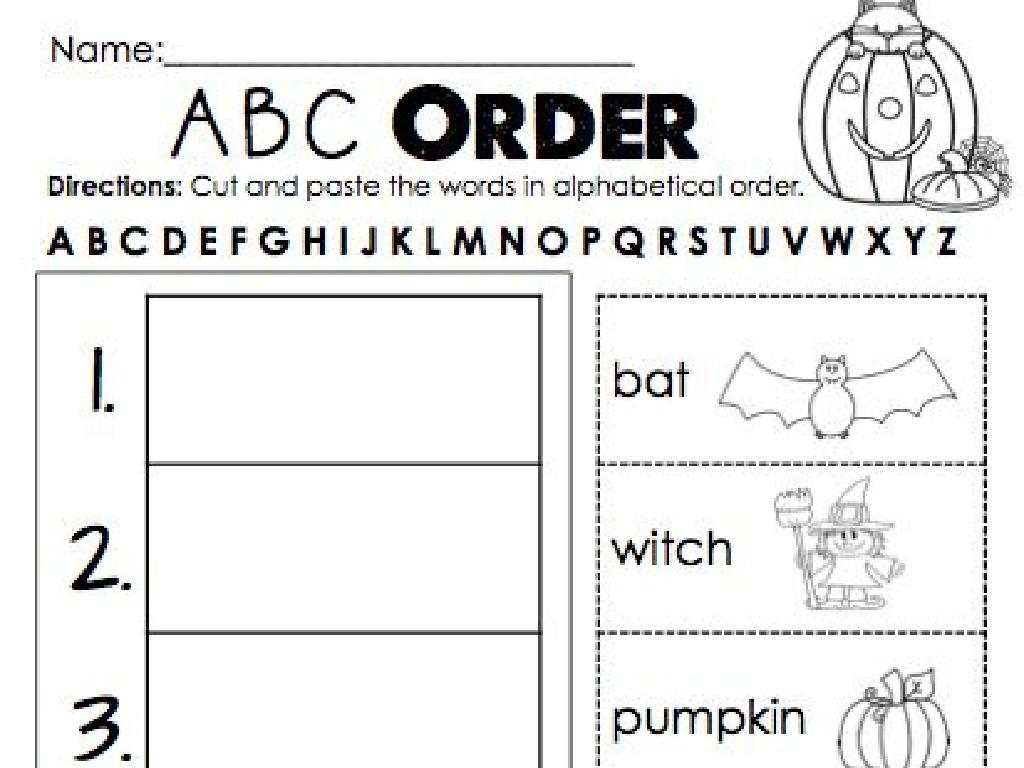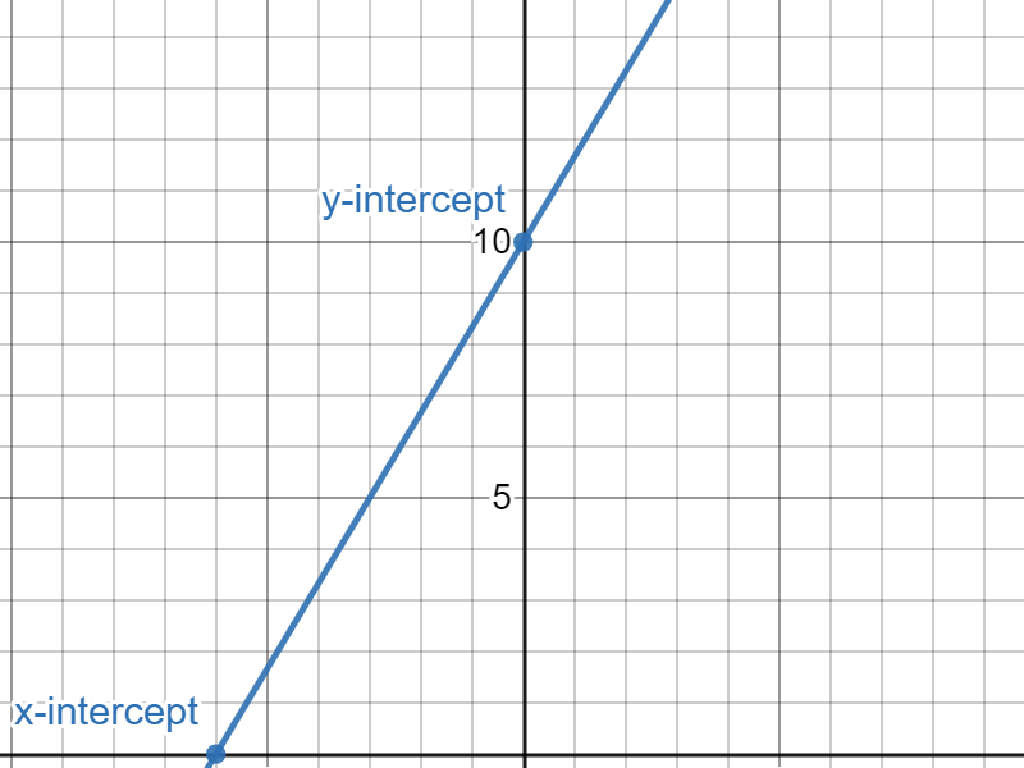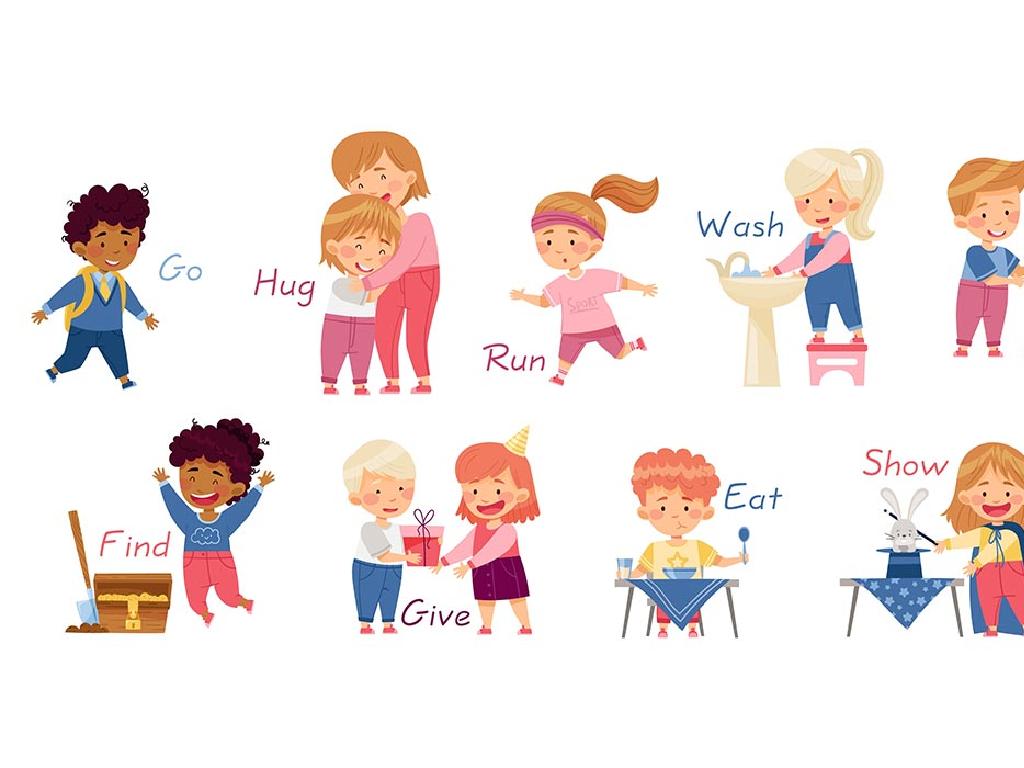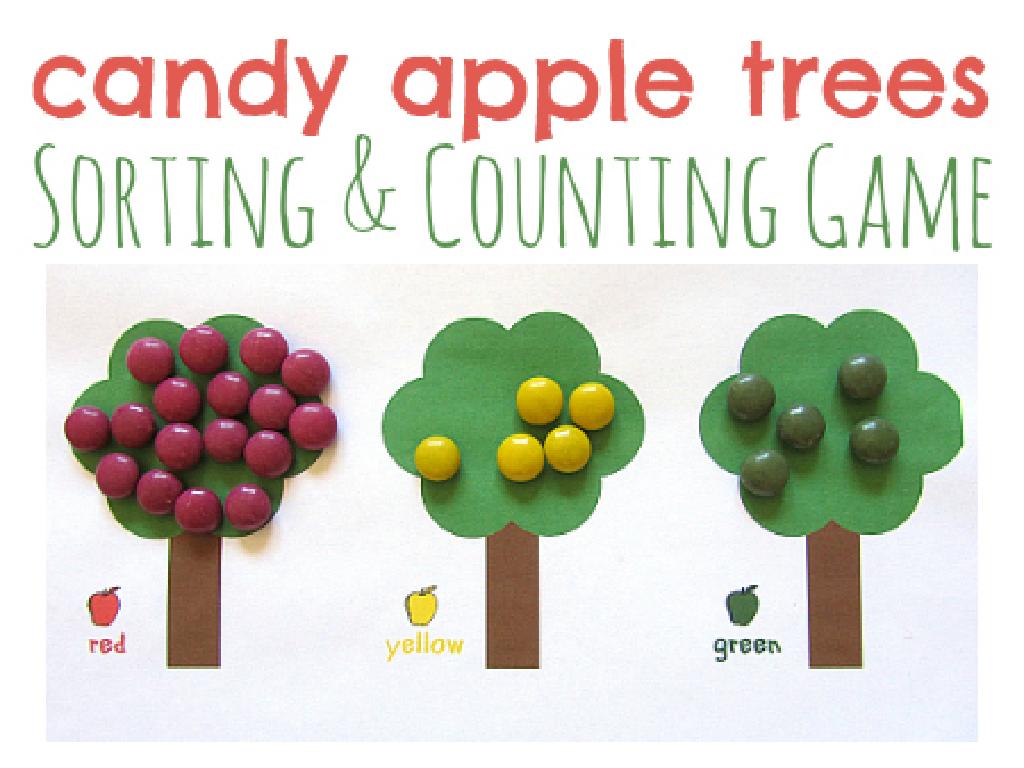Show Fractions: Area Models
Subject: Math
Grade: Third grade
Topic: Understand Fractions
Please LOG IN to download the presentation. Access is available to registered users only.
View More Content
Welcome to Fractions!
– Learn what fractions represent
– Explore parts of a whole
– Like pieces of a pie or a pizza
– See fractions in daily life
– Slices of cake, sharing toys, or pizza toppings
– Fun fraction activities
|
This slide introduces the concept of fractions to third-grade students. Begin by explaining that fractions represent parts of a whole, which is a fundamental math concept. Use tangible examples like slices of a pie or pizza to illustrate how a whole can be divided into equal parts. Discuss how fractions are not just numbers, but they also represent parts of something we can see or share in our daily lives, such as dividing a cake among friends or sharing toys. Engage the students with activities where they can practice creating fractions with area models, such as coloring parts of a shape to represent different fractions. The activities should be interactive and suitable for their grade level, ensuring they grasp the concept of fractions as parts of a whole.
What is a Fraction?
– A fraction shows part of a whole
– Like a slice of pizza from a whole pie
– Numerator over denominator
– Top number tells slices you have, bottom number tells total slices
– Fractions in daily life
– Examples: 1/2 of an apple, 3/4 of a water jug
– Understanding with area models
– Visualize fractions by shading parts of a shape
|
Begin by explaining that a fraction represents a part of a whole, using relatable examples like a slice of pizza to illustrate the concept. Clarify that the numerator (top number) indicates how many parts we have, while the denominator (bottom number) shows how many equal parts the whole is divided into. Provide everyday examples of fractions to help students connect the concept to their lives, such as cutting an apple into halves or filling a water jug three-quarters full. Introduce area models as a visual tool to help students better understand and visualize fractions by dividing shapes into equal parts and shading them to represent fractions.
Understanding Fractions with Area Models
– Visualize fractions using area models
– Area models divide shapes into equal parts to illustrate fractions
– Each model part represents a fraction
– If a shape has 4 parts and 1 is shaded, it represents 1/4
– Color parts to demonstrate fractions
– Use different colors to shade fractions of shapes
– Area models simplify fraction concepts
|
Area models are a great tool for helping third graders understand the concept of fractions. By dividing shapes into equal parts, each part can represent a fraction of the whole, making it easier for students to visualize. For example, if a square is divided into four equal parts, one colored part represents one quarter, or 1/4, of the whole. Encourage students to use different colors to represent different fractions and to see how many parts make up a whole. This hands-on activity not only makes learning fractions fun but also reinforces their understanding of how fractions represent parts of a whole.
Fractions in Shapes
– Shapes divided into equal parts
– Each part represents a fraction
– If a square is cut into 4 equal parts, each part is 1/4 of the whole.
– Identifying fractions in shapes
– How is 1/2 shown in a circle? What about 1/3 in a rectangle?
– Practice with various shapes
– Let’s try dividing different shapes and see the fractions!
|
This slide introduces students to the concept of fractions using shapes. Begin by explaining that when we divide a shape into equal parts, each part is a fraction of the whole shape. Emphasize that the denominator of the fraction represents the total number of equal parts, and the numerator indicates how many parts we are considering. Use common shapes like circles, squares, and rectangles to show fractions such as halves, thirds, and fourths. Encourage students to practice by drawing shapes and dividing them into equal parts to represent different fractions. This visual representation helps solidify their understanding of fractions as parts of a whole.
Building Fractions with Area Models
– Create your own area models
– Draw shapes and shade parts to show fractions
– Understand fractions with models
– See how many parts make a whole
– Compare fractions using models
– Use your models to see which is bigger or smaller
– Explore larger and smaller fractions
– Find out what happens when you change the number of equal parts
|
This slide introduces students to the concept of using area models to visualize fractions. Encourage students to draw shapes such as rectangles or circles and shade in parts to represent different fractions. This hands-on activity helps them understand how fractions represent parts of a whole. By comparing shaded areas, students can visually grasp which fractions are larger or smaller. It’s a concrete way to explore the concept of fractions beyond numbers and to develop a deeper understanding of the relationship between the numerator and the denominator. During the next class, students can share their models and discuss their observations about different fractions.
Equivalent Fractions with Area Models
– What are equivalent fractions?
– Fractions that have the same value, even if they look different
– Area models show equivalence
– Divide a shape into equal parts, shade equal areas to show equivalent fractions
– Examples of equivalent fractions
– 1/2 is the same as 2/4, 3/6, or 4/8
|
This slide introduces the concept of equivalent fractions, which are different fractions that represent the same part of a whole. Use area models to visually demonstrate how the same area can be divided into different numbers of equal parts, making it easier for third graders to grasp the concept. Show examples like 1/2, 2/4, 3/6, and 4/8 to illustrate that these fractions are all equal because they cover the same amount of space in an area model. Encourage students to draw their own area models and come up with other sets of equivalent fractions. This visual approach helps solidify their understanding of fractions as numbers that can represent the same value in different forms.
Practice Time: Drawing Area Models
– Draw area models for fractions
– Use squares or circles to represent whole and shade parts to show fractions
– Share your models with the class
– Discuss what we’ve learned
– Reflect on the different ways to represent fractions
– Group discussion activity
– Work in small groups to talk about our fraction models
|
This slide is meant to engage students in a hands-on activity where they will draw area models to represent fractions. Provide students with graph paper or blank paper and ask them to draw shapes like squares or circles, then shade in parts to represent different fractions. After completing their drawings, students will share their models with the class to demonstrate their understanding. This will be followed by a group discussion where students can talk about what they’ve learned and observe the variety of ways fractions can be represented. Encourage students to explain their thought process during the sharing and to actively listen to their peers during the discussion. This activity will help solidify their understanding of fractions as parts of a whole and how those parts can be visually represented through area models.
Class Activity: Fraction Art
– Create fraction art with area models
– Draw shapes and divide them to show fractions like 1/2 or 1/4
– Use colors for different fractions
– Each fraction part can be a different color, like red for 1/2
– Present and explain your fraction art
– Tell the class what fractions you’ve shown and how you did it
|
This activity is designed to help students visualize fractions by creating art with area models. Provide students with paper divided into sections (like squares or circles) and have them color in parts to represent different fractions. For example, they could color in 1/2 of a shape one color and the other 1/2 a different color. Encourage creativity and ensure they understand that each part must be equal to represent the fraction accurately. After completing their art, students will present their work to the class, explaining the fractions they chose to represent and how the area model illustrates those fractions. This will reinforce their understanding of fractions and provide practice in explaining mathematical concepts.
Wrapping Up: Fractions & Area Models
– Recap: Area models for fractions
– We visualized parts of a whole using shapes divided into equal parts.
– Understanding fractions is useful
– Fractions are everywhere: in cooking, in sharing, and in time-telling.
– How fractions apply to real life
– Using fractions when cutting pizza or measuring ingredients.
– Get ready for the next fraction class
|
As we conclude today’s lesson, remind the students how area models provide a visual way to see fractions as parts of a whole, which can be shapes like circles or rectangles. Emphasize the importance of understanding fractions, as they are not just for math class but are used in everyday life, such as cooking or dividing things equally among friends. Give examples to illustrate these points. Encourage students to think of their own examples of fractions they’ve encountered outside of school. Lastly, let them know that the next class will build on what they’ve learned today, so they should come prepared to dive deeper into the world of fractions.




/exploration_maps_history.png)

